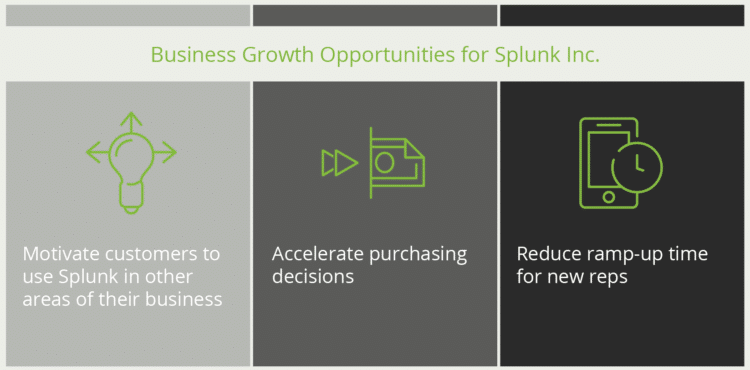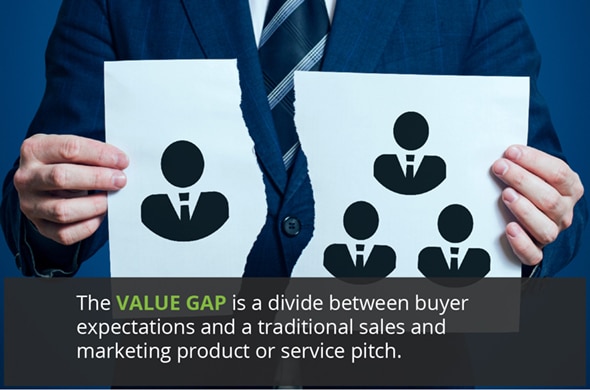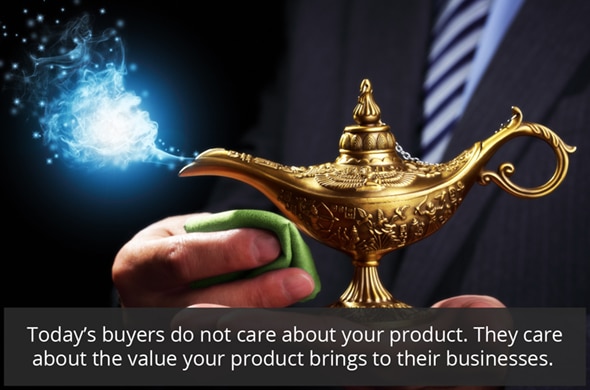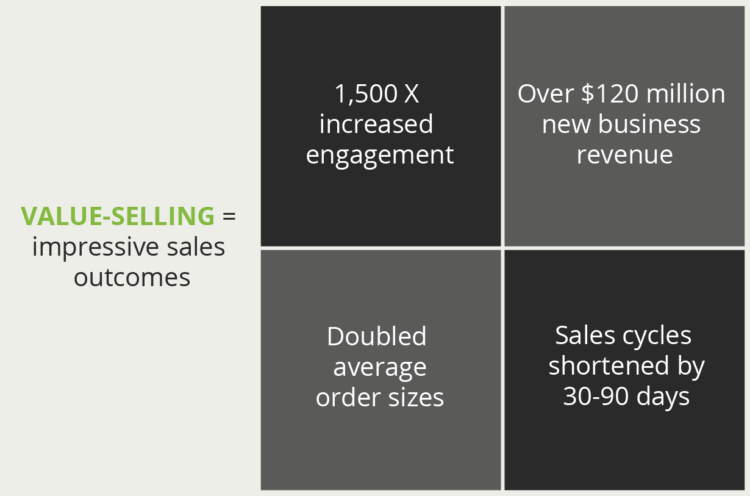For many companies, experiencing 50% growth year-on-year is a dream. For San Francisco-based Splunk, it was a reality. With customers in more than 100 countries using its software to deepen business and customer understanding, mitigate cybersecurity risk, prevent fraud, improve service performance, and reduce costs, the leading provider of real-time operational intelligence technology was riding high on the waves of success.
But success is fleeting. And the Splunk team knew it. They knew if they wanted to build on this momentum, keep their competitive edge, and future-proof the business for continued growth, they couldn’t get comfortable with the status quo. So they identified three key areas of improvement and set out to find a solution.

Business Growth Opportunities for Splunk Inc.
- Many existing Splunk customers weren’t using the technology beyond their initial application. How could they motivate customers to use Splunk in other areas of their business?
- As with any B2B technology, Splunk’s sales cycles were longer than desired. How could they accelerate purchasing decisions?
- As the business continued to grow, so did the Splunk sales force. How could they reduce ramp-up time for new reps?
Ultimately, Splunk determined it could solve for all three of these challenges by closing the Value Gap, the biggest threat to the company’s lasting success.
What is the Value Gap?

Imagine you have a magic lamp you no longer need. I know, weird and unlikely. Stay with me. You meet a potential buyer looking for three things: a million dollars, a cute puppy, and a Ferrari. Of course, the genie in your lamp can give her all of those things. In your mind, the lamp is as good as sold. But then you open your mouth, and you pitch…the lamp. The physical lamp. “My lamp is gold. It’s shiny. It’s one-of-a-kind. Blah blah blah…”

Real life is no different. If your buyer is looking to solve for specific business challenges and you come in beating your chest about how great your product and its shiny features are, you’re going to lose. Today’s buyers do not care about your product. They care about the value your product brings to their businesses.
OK, now back to Splunk…
How Splunk used Value-Selling to close the Value Gap
Splunk’s salespeople were selling the lamp. While they may have understood the inherent value of Splunk’s products, they were failing to communicate that value to buyers. To close the Value Gap, Splunk needed to fundamentally shift its sales organization from product-led to value-centric selling. And so began its digital sales transformation.
First, the company formed a Business Value Consulting Group dedicated to developing value positioning, messaging, and financial justification. This team also engaged directly in large deals to develop CFO-ready business cases. In order to scale its value-selling initiative to its global sales team, Splunk next developed and distributed easy-to-use, interactive financial justification and ROI tools. These calculators would make it easier than ever for Splunk sales reps to have engaging business value conversations with prospects in real-time. Within six weeks, the first tool was launched to a pilot team, and you’re really going to like what happened next…
Value-Selling leads to impressive sales outcomes
Results were immediate.

With limited resources, Splunk had transformed the way it did business and addressed all three key opportunities in a very short amount of time. Leveraging the right value selling technology, Splunk went on to deliver a simple, self-service catalog of ROI calculators and TCO comparison tools.
By clearly articulating the value of their technology and helping customers build a compelling business case, Splunk sales reps continue to convince customers to prioritize the purchase of their solutions, shorten sales cycles, and obtain the larger orders needed to achieve the company’s aggressive growth targets today.
The moral of this story? Stop selling the lamp. Close the Value Gap and see your key business opportunities become reality. We can help.

Comments are closed.